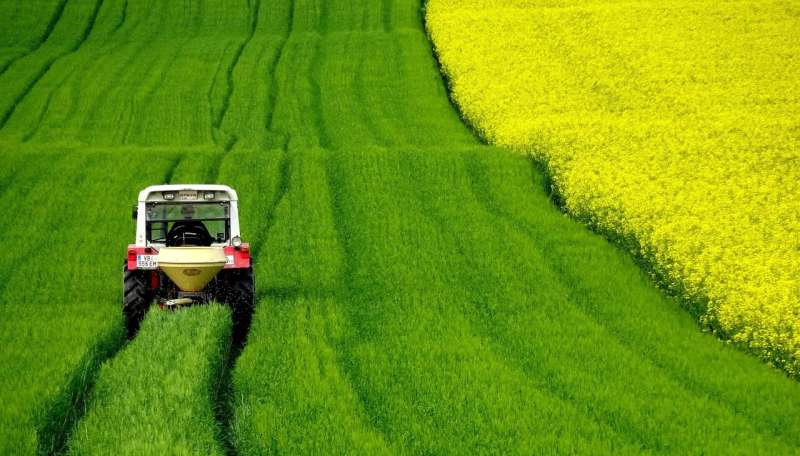Canadian crops beat global emissions鈥攅ven after 17 trips across the Atlantic

Sadie Harley
scientific editor

Robert Egan
associate editor

Canadian-grown wheat, canola and peas have some of the lowest carbon footprints in the world鈥攕o low that, in some cases, they could be shipped to Europe 17 times before matching the emissions of the same crops grown there.
The study by UBC Okanagan, published in , compared the carbon footprints of these crops from Canada, France, Germany, Australia and the United States using the ISO 14067 standard.
Led by Dr. Nicole Bamber of UBCO's Irving K. Barber Faculty of Science, the research shows that Canada's lower emissions are mainly due to soil storing more carbon and less nitrous oxide being released.
This is largely thanks to widespread low and no-till farming practices and the climate of Western Canada.
"The idea that 'local is always lower-carbon' doesn't hold true," says Bamber, the paper's lead author. "In fact, for many food products, transportation only accounts for a small part of the emissions.
"When you look at the full lifecycle of crop production, Canada's Prairie-grown wheat, canola and peas consistently outperform their international counterparts, even when you factor in shipping thousands of kilometers to market."
Dr. Bamber and Dr. Ian Turner, post-doctoral research fellows, worked alongside Dr. Nathan Pelletier in his Food Systems Priority Research for Integrated Sustainability Management Lab.

The main reasons for Canada's low emissions are less nitrous oxide and carbon stored in the soil. This is thanks to decades of conservation tillage and careful farming practices that help soils act as carbon sinks rather than sources.
In other countries, soils often lose carbon because of heavier farming methods as well as less favorable soil and climate conditions.
"Canada's production advantages aren't accidental," says Dr. Pelletier, an Associate Professor cross-appointed to the faculties of Science and Management. "They come from deliberate farming choices, supportive policies and environmental conditions."
The research assessed full life-cycle greenhouse gas emissions from crop production to the farm gate, including fertilizer production, field activities, field-level nitrous oxide emissions and soil carbon changes.
Break-even transport distances were calculated to determine how far Canadian crops could travel before their total carbon footprint matched that of crops grown domestically in destination countries.
The study questions common beliefs about "food miles" and suggests that buying and marketing decisions should consider more than just distance. The authors say the data can help focus efforts to cut emissions and show how Canadian crops can support global climate goals.
"This gives Canada a competitive edge for Canadian agriculture in global markets that are increasingly sensitive to sustainability," says Dr. Pelletier.
More information: Nicole Bamber et al, Rapeseed, wheat and peas grown in Canada have considerably lower carbon footprints than those from major international competitors, Nature Food (2025).
Journal information: Nature Food
Provided by University of British Columbia




















